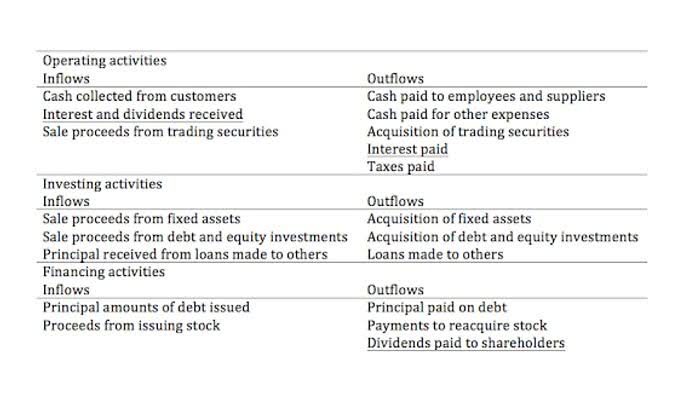
The gross profit margin is also calculated by using the cost of goods sold. After the calculation, users will assess whether or not the entity’s gross profits could handle others’ sales and administrative expenses. This is really important for potential investors where is cost of goods sold on balance sheet as they only want to invest in a profitable company. Cost of Goods Sold is also known as “cost of sales” or its acronym “COGS.” COGS refers to the direct costs of goods manufactured or purchased by a business and sold to consumers or other businesses.
Over 1.8 million professionals use CFI to learn accounting, financial analysis, modeling and more. Start with a free account to explore 20+ always-free courses and hundreds of finance templates and cheat sheets. Throughout Year 1, the retailer purchases $10 million in additional inventory and fails to sell $5 million in inventory. Under the matching principle of accrual accounting, each cost must be recognized in the same period as when the revenue was earned.
Where does cost of goods sold fit in the calculation for taxable income?
By utilizing technology, such as accounting software and inventory management systems, businesses can automate the process of tracking COGS and generate real-time reports for better decision-making. COGS and cost of revenue are also included in the cost of goods sold account. Calculating your COGS involves determining the average cost per unit sold and the inventory at the end of the period. Instead, they undergo recording as inventory until their sale, when their worth gets transferred to the income statement as revenue.

For instance, if a company has $100,000 in sales and COGS is $30,000, the gross profit is $70,000. Also, costs such as shipping and packaging directly related to delivering products to customers are also included. Essentially, the cost of revenue represents the expenses necessary to generate sales, providing a fundamental metric for assessing the profitability of a company’s core operations.
Indirect Costs
The higher your production costs, the higher you need to price your product or service to turn a profit. Pricing your products and services is one of the biggest responsibilities you have as a business owner. And just like Goldilocks, you need to find the price that’s just right for your products or services. This method helps avoid the sometimes complicated tasks of specific identification, especially for smaller-sized goods. This method follows the principle opposite the one observed in the FIFO method.
- OPEX (Operating Expenses) play a crucial role in determining net income.
- Do not factor things like utilities, marketing expenses, or shipping fees into the cost of goods sold.
- Many service companies do not have any cost of goods sold at all.
- You would need to have more units sold/inventory sold than goods purchased or not have purchased any goods in an accounting period but also have returns of a product purchased in an earlier period.
Subtracting this ending inventory from the $16,155 total of goods available for sale leaves $7,200 in cost of goods sold this period. On the other hand, keeping expenses under control can positively impact profitability. When expenses are going towards inventory and COGS, it is considered a cost of sales and can impact the bottom line of a business. Products that were not sold can also contribute to higher OPEX, as these expenses are costs that are not generating any revenue for the company. Operating expenses are the business expenses necessary for running your business and do not directly relate to the cost of production. Examples of operating expenses include cost of materials, cost of inventory, and cost of revenue.
Calculation for the Ending Inventory Adjustment under Periodic/Specific Identification Methods
Costs of goods sold are not considered as the company’s assets, liabilities, and income. The cost of good solder is considered as expense in which the recognition and measurement are the same as other expenses. And the production system in term of production efficiency and effectiveness probably are the areas that entity management need to review and assess to see if there is any room to improve.

In some circles, the cost of goods sold is also known as cost of revenue or cost of sales. COGS is sometimes referred to as the cost of sales; it refers to the costs a company has for making products from parts or raw materials or buying products and reselling them. These costs are an expense of the business because you sell these products to make money. Correctly calculating the cost of goods sold is an important step in accounting.
